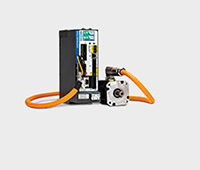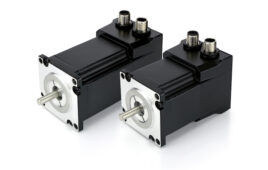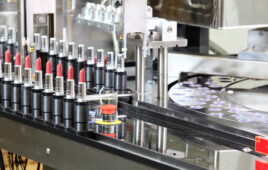In many areas of its plants, Siemens relies on the automatic capture of parts and components with two-dimensional barcodes (2D codes), paired with continuous process upgrades in manufacturing areas. For both methods, Siemens had to develope the in-house system it calls SIMATIC Ident.
An example is the production of automation components by the plant in Amberg, Germany. If approached conventionally, the varying demand for each type of Sirius switching device would require a large number of each to be kept in stock. The approach in this plant, however, was demand-driven production that processes incoming orders—down to a lot size of 1—within a short period of time. To this end, flexible machines were employed to perform specific production steps for each variation—such as inserting a coil core or attaching a cover plate. By means of an RFID transponder in the work piece carrier, the machine detects the type of the product. Without any changeover time, the production program can be set to another product type. The RFID system SIMATIC RF300 is capable of especially large memory sizes with high reading speeds so that cycle times are reduced as well.

In the Siemens plant in Karlsruhe, employees receive detailed work instructions on a screen—by virtue of a 2D code on each product.
At the latest production line, it became evident that many machines were under-utilized. Increasing the flexibility of the machines was too complicated though. For this reason, the degree of automation was slightly reduced and a total of three manual assembly stations were inserted into the production line. At these stations, well-trained employees performed the individual work steps with much more flexibility. Moreover, the company gained a better control of their resources. Now, depending on circumstances, not all manual assembly stations are manned. RFID still plays an important role: Thanks to the radio chips, the employees get all work instructions for the specific product displayed on a screen.
The optical codes play an important role too. For instance, in the plant in Karlsruhe, Germany, all components are equipped with 2D codes, which are individually captured during installation. This makes complete tracking and tracing of the products and all components possible. For example, if a component delivery turns out to be faulty, it can easily be determined into which end products these components were installed. Similar to the Amberg plant, the Karlsruhe plant also uses the 2D codes to support the employees during the assembly of the products. Because every item comes with a 2D code on the type label, work instructions can be displayed on a screen even during packing so that the correct accessories for the type can be enclosed. These parts are also individually scanned—the system only closes the work step once all required parts have been captured. The capture occurs either with handheld scanners or stationary devices from the SIMATIC MV line.
Siemens
www.usa.siemens.com
Filed Under: MOTION CONTROL, Switches





Tell Us What You Think!